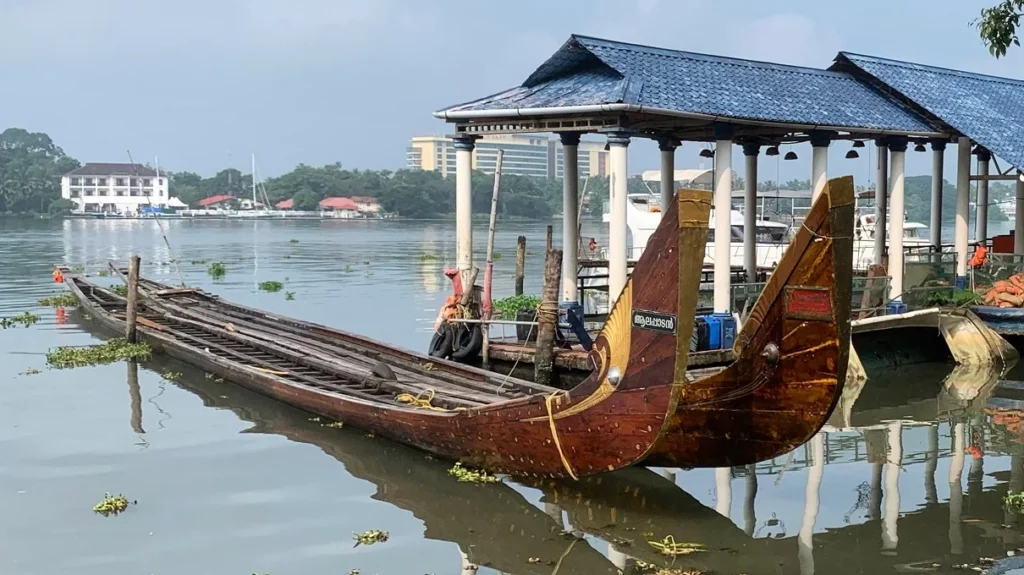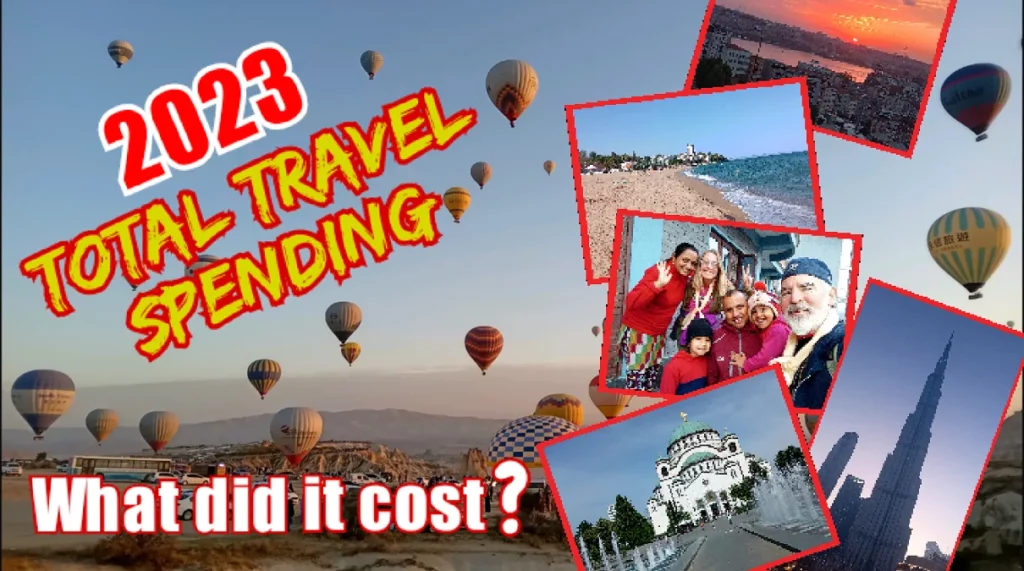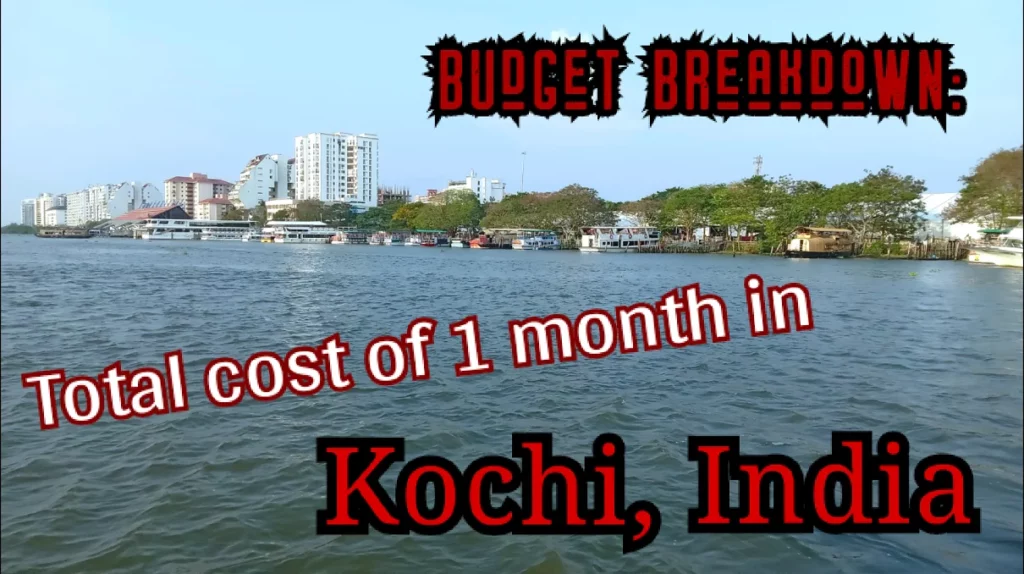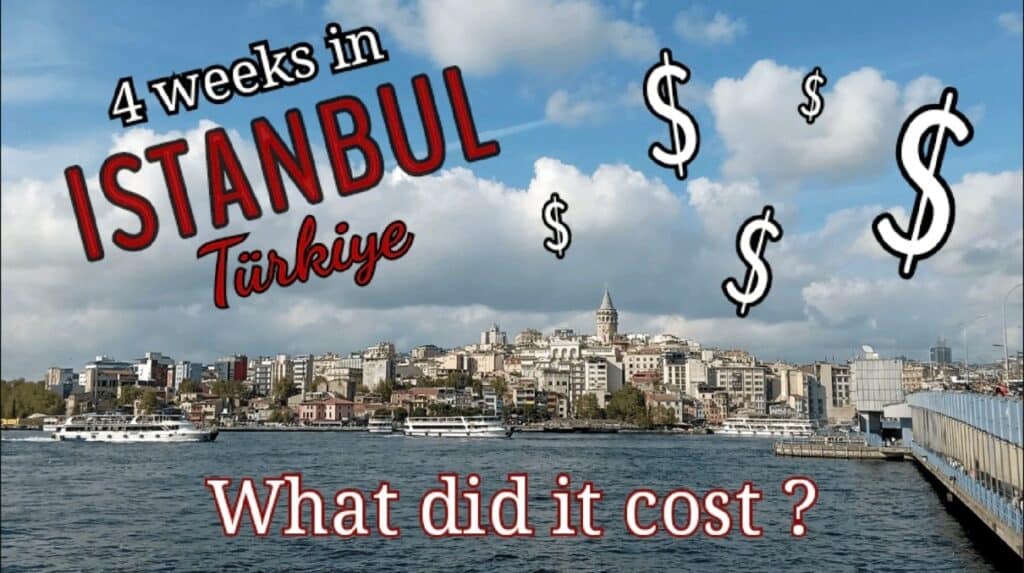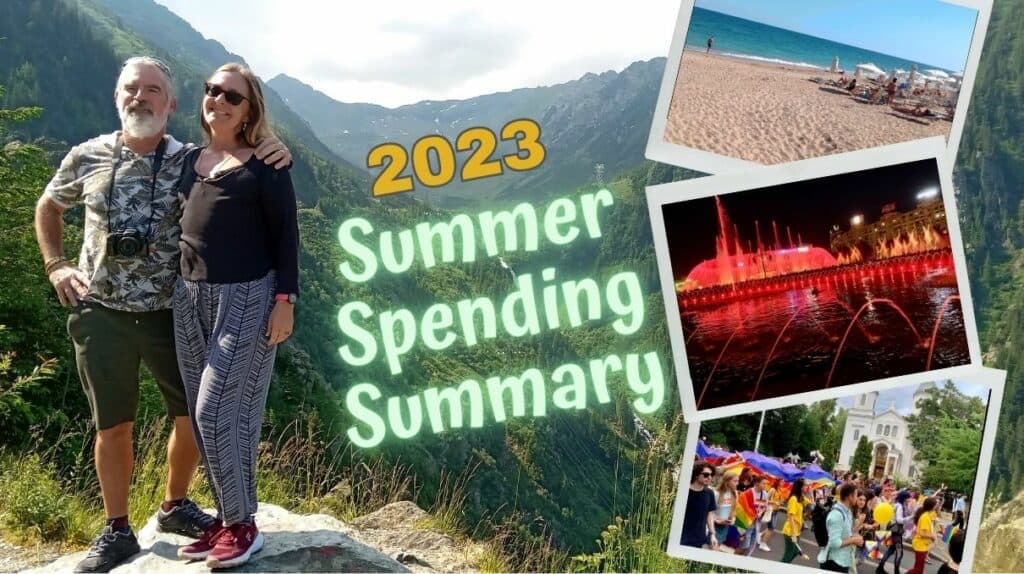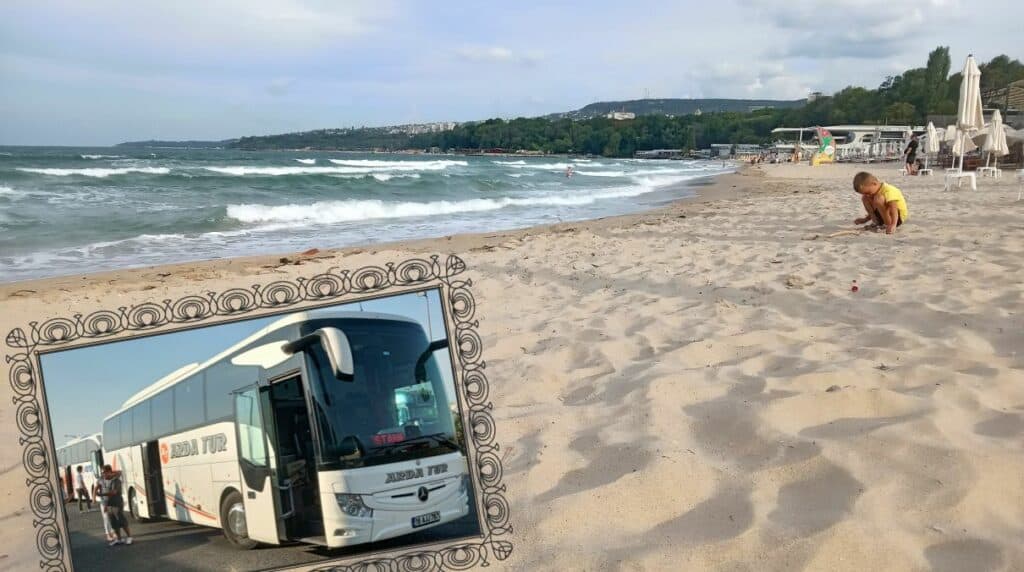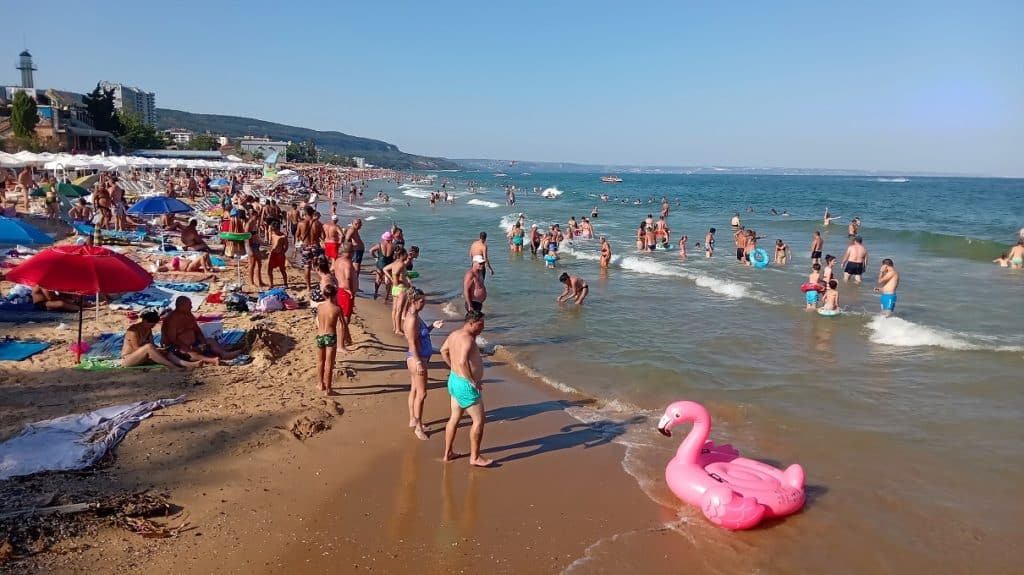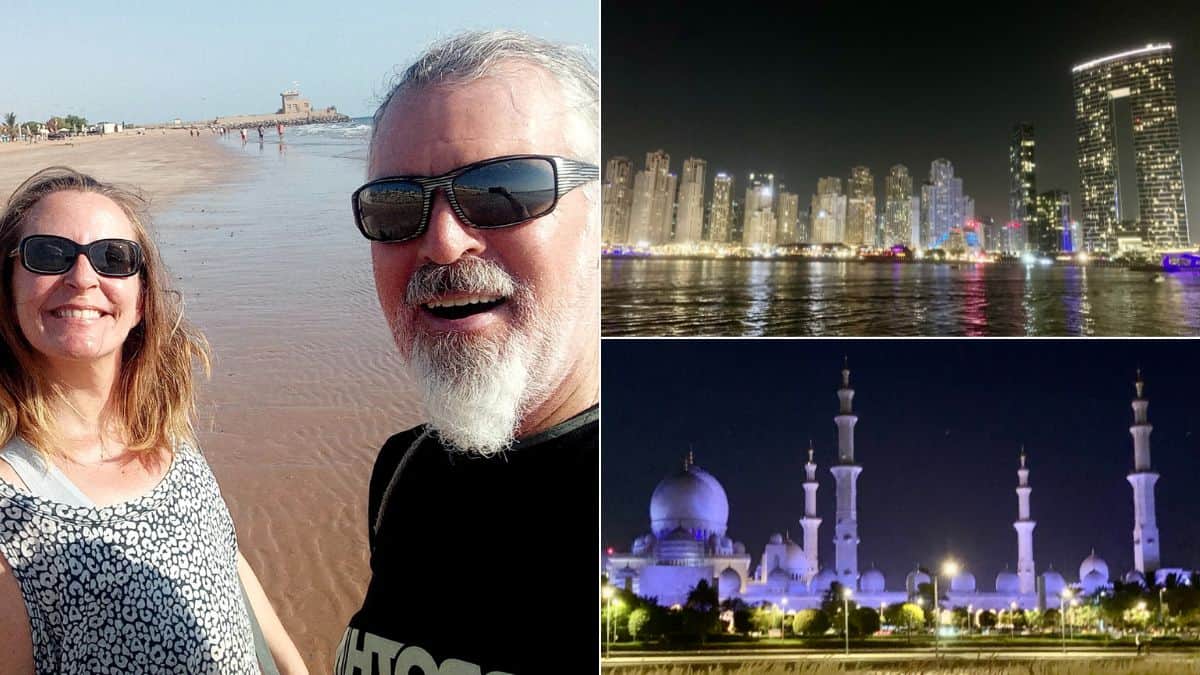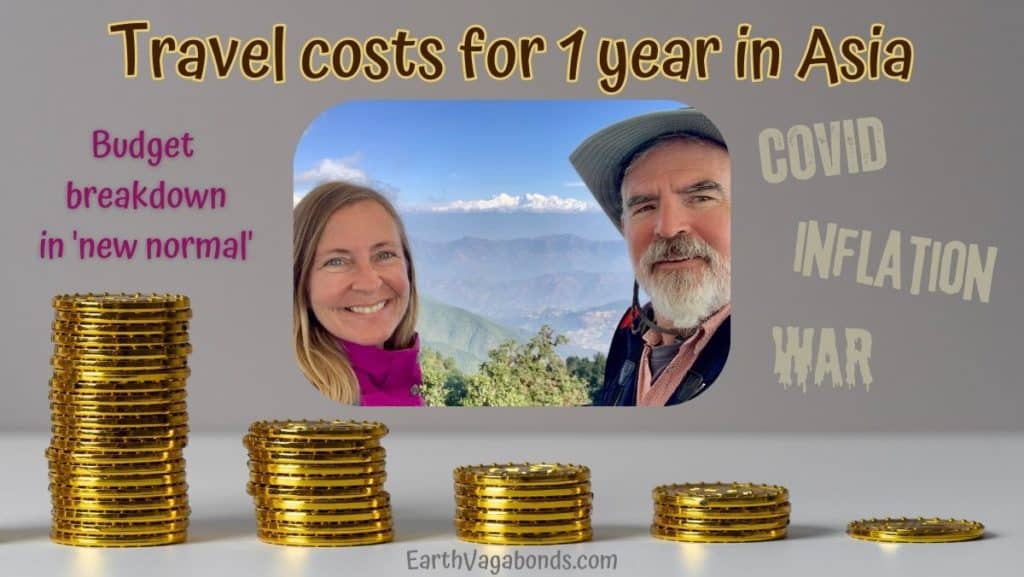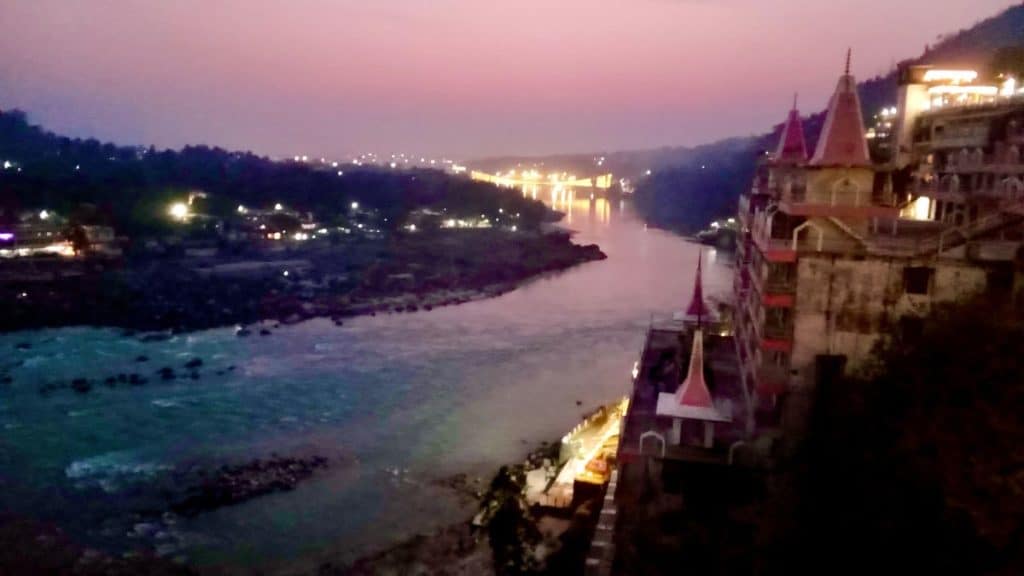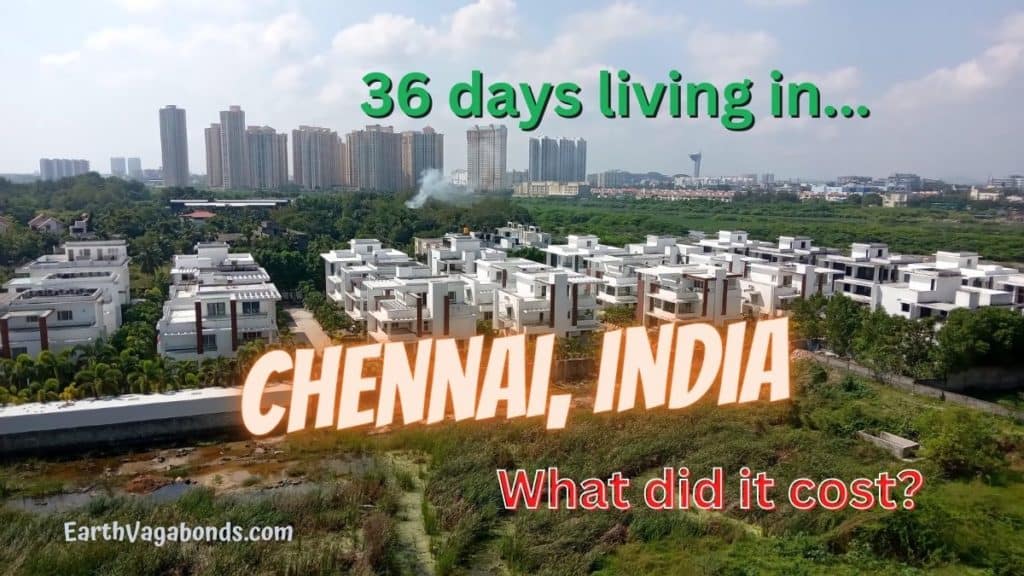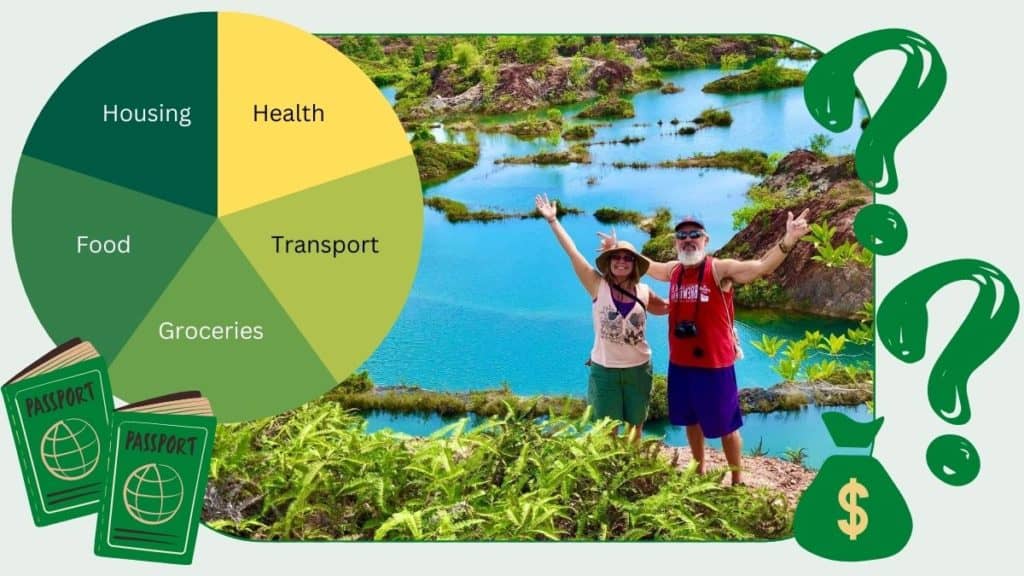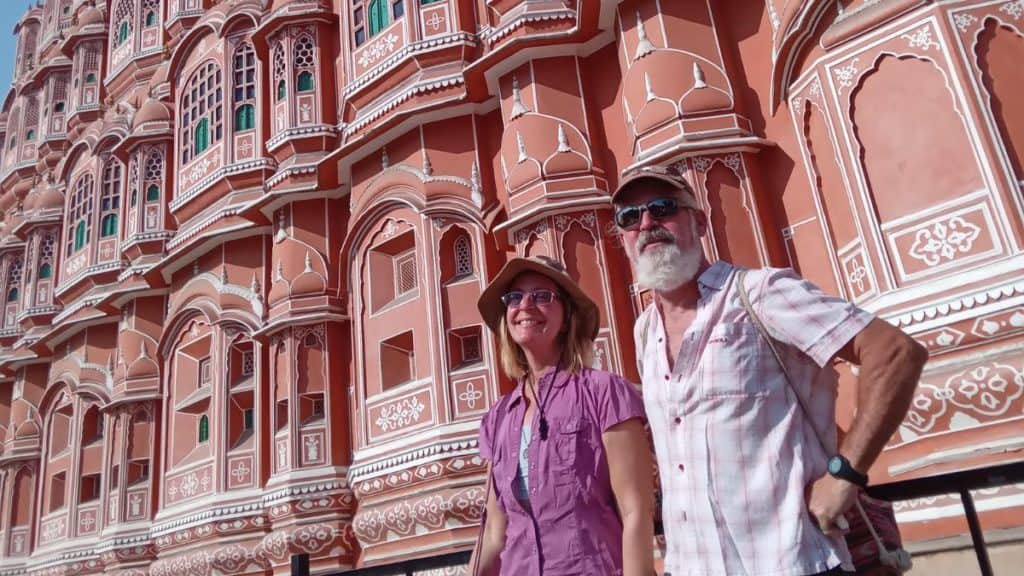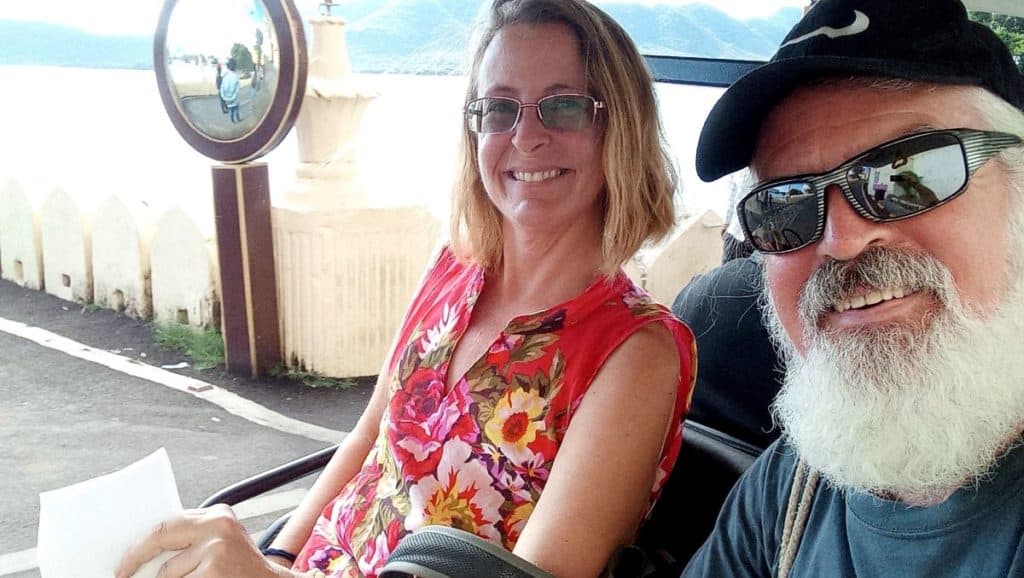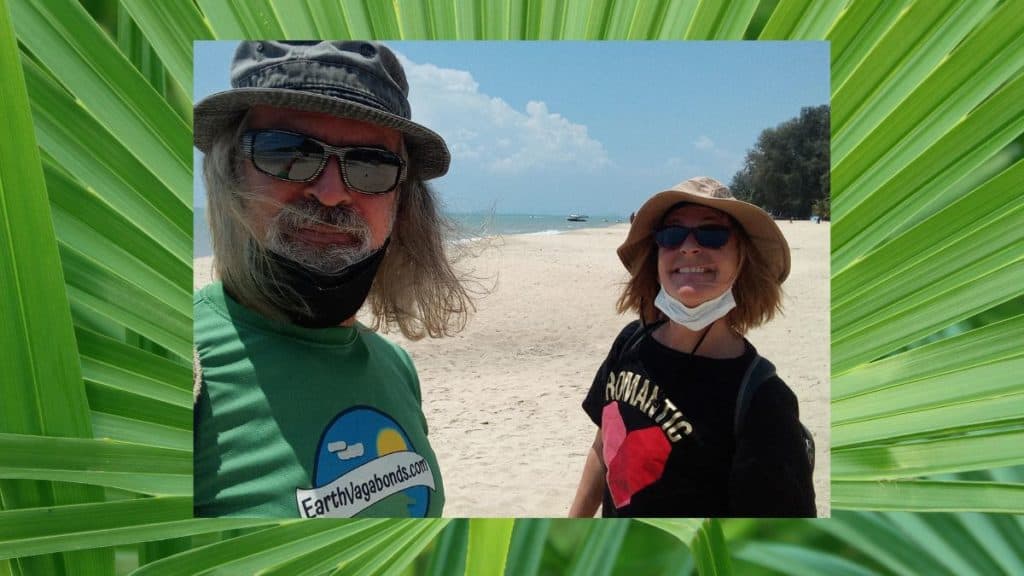We were supposed to be in the Middle East but the Israel-Hamas War forced us to reschedule. So we decided to close out 2023 back in the Indian subcontinent. This post is about our first stop on our third foray into this country: charming Kerala.
We left Antalya, Turkiye, laid over in Dubai, UAE, and landed in Kochi – the largest city in the southern Indian state of Kerala.
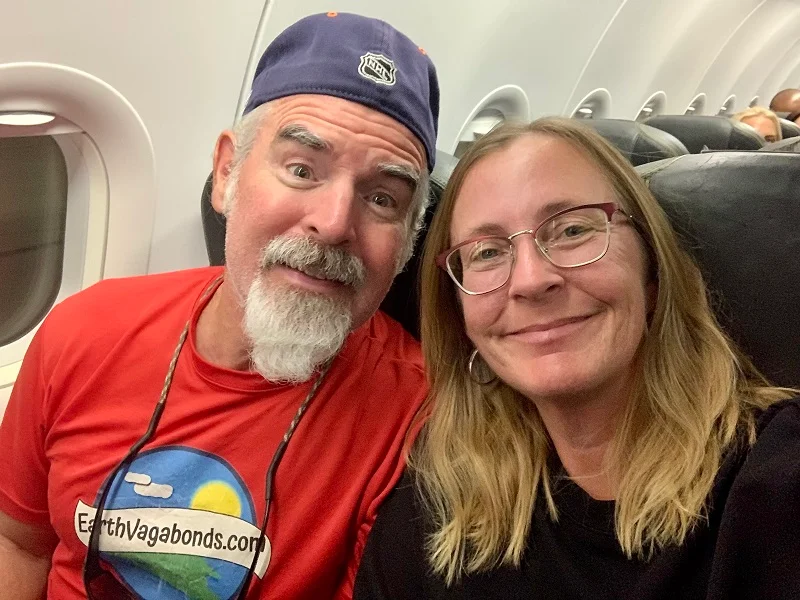
It was our fourth – and last – flight of 2023. As budget slow travelers, we fly as little as possible. Of course, it’s cheaper. But also: flights are horrible for our climate fate. So it was heartening to find out Kochi’s airport is the world’s first solar-powered airport!
First impression: Awesome!
Charming Kerala in Southern India
Other great first impressions about infrastructure in Kochi:
- much less litter than other Indian cities – including smaller cities
- sidewalks are blocked with metal bars so motorcycles stay on the roads
- traffic laws are generally obeyed; traffic police are everywhere
- smoking is illegal in public places (far different than Eastern Europe and Turkiye – our last stops!)
- street signs are on all busy corners – and most signs include English
- efficient public transportation system with buses, metro – and a ‘water’ metro!
The water metro is the first of its kind in India. Plans are to extend the relatively new system with more routes and battery-powered electric ferries.
Marine Drive in Ernakulam district
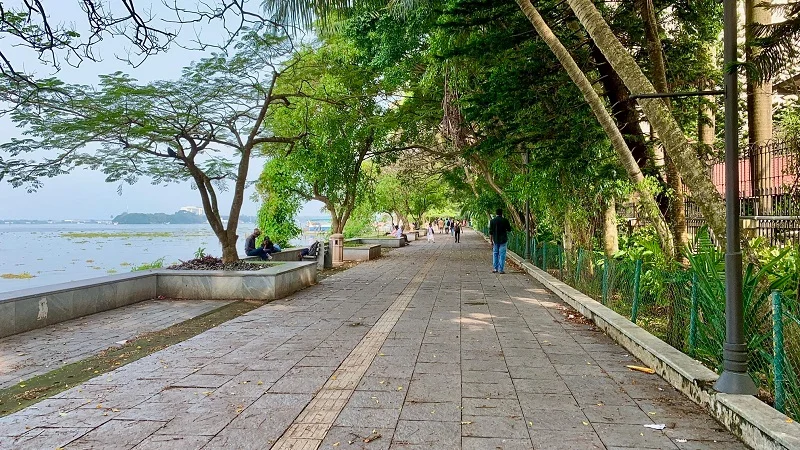
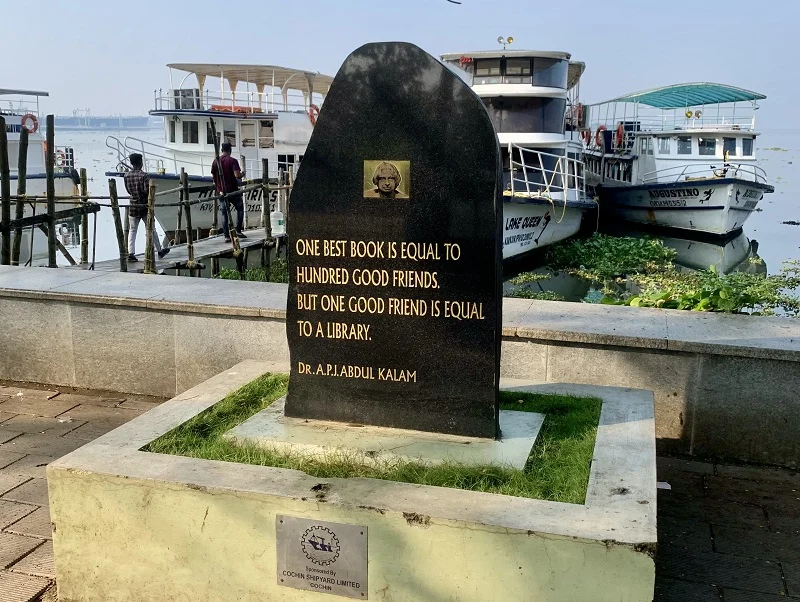
Once again, spouse Theo has picked out the perfect spot in the city for our month-long Kochi stay — an apartment building on Marine Drive.
Marine Drive is a misnomer since it’s a pedestrian walkway. Tourist boats offer peninsula tours and public ferries run over to Fort Kochi and the beaches. Shops, restaurants, trees, benches, and monuments make this area ideal for domestic and foreign tourists.
I’ve used this walkway nearly every morning of our visit to walk, jog, and exercise. But with Kochi humidity – if you don’t get outside before the sun gets strong, you’ll sweat standing still.
Our apartment is wonderful, too! It’s a huge two-bedroom with everything I need to be completely comfortable and happy. (Mom Diane was supposed to be in the second bedroom, but plans changed and she will join us in 2024.) Theo plans a ‘Kortn’s Crib’ video tour, soon.
Marine Drive boat rides
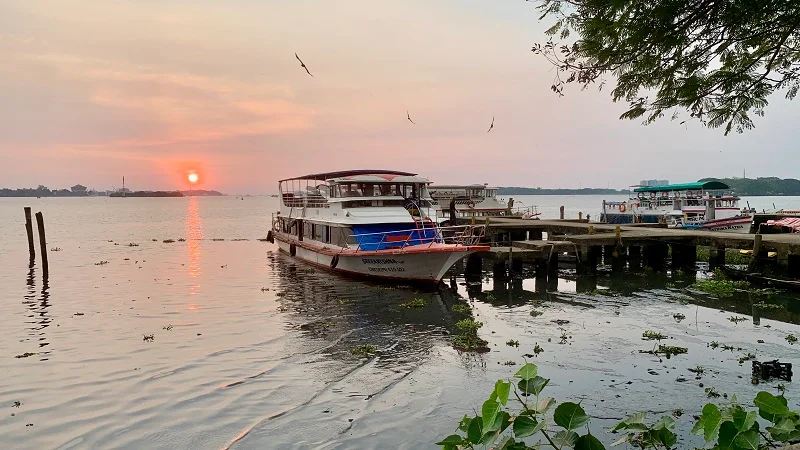
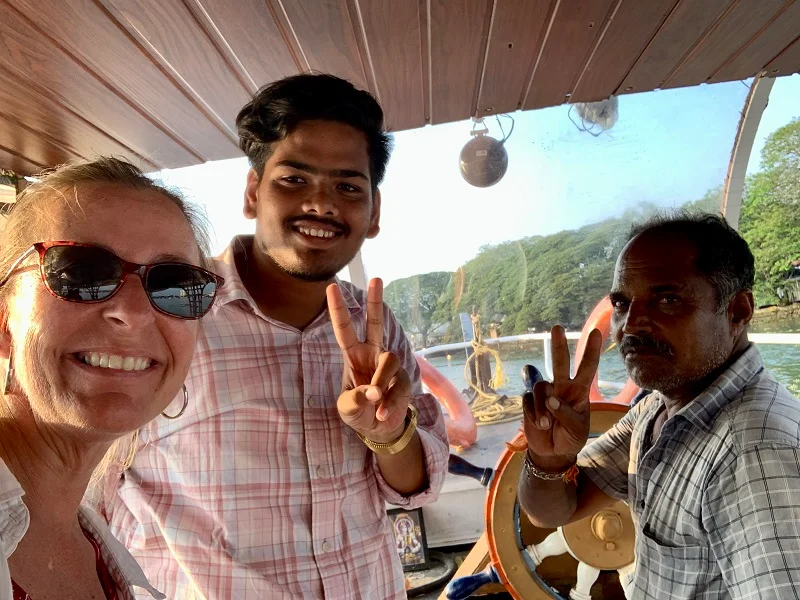
Private boats line Marine Drive and hour-long rides for as little as 100 rupees ($1.20) per person. They leave the dock whenever the boat is full.
Dinner cruises cost more on larger boats, and middle-of-the-road options round out the offerings.
Don’t bother to haggle for a deal. Prices are printed on tickets, which I assume are set by the boat owners’ association.
We even got to attend a special event – the inauguration ceremony of a new tourist cruiser – the largest one in Kochi. State-of-the-art everything on the new “Classic Imperial.”
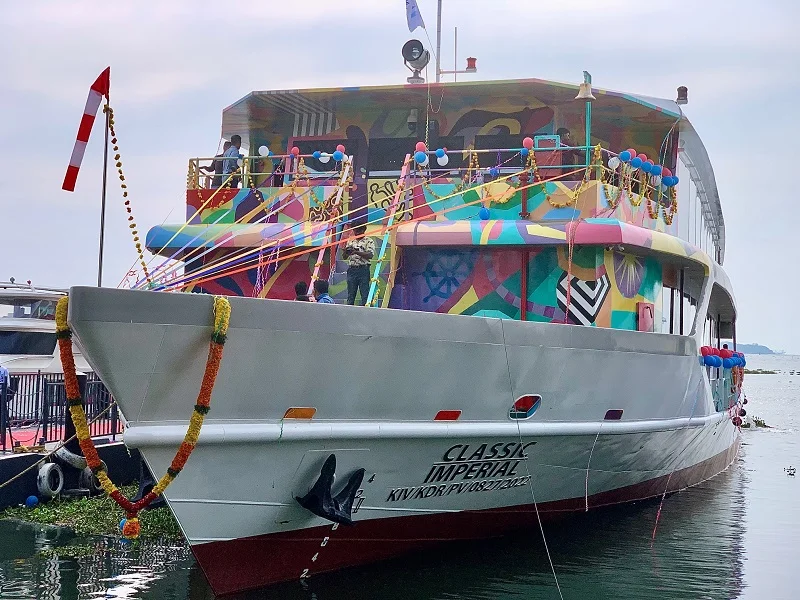
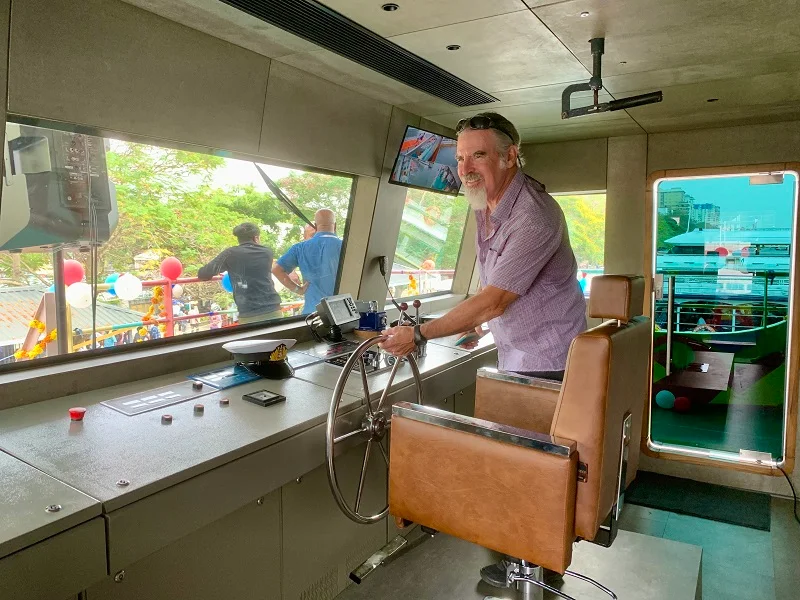
The Classic Imperial wasn’t actually running yet during our stay, but the plan was to charge the equivalent of $14.50 for lunch rides and $24 for dinner cruises once the final permits were in.
Fort Kochi & Beaches
Public ferries run from Marine Drive to Fort Kochi, and the water metro runs across the bay for access to public beaches.
The fort is long gone, with only a few corners left here and there. But Fort Kochi is a big tourist draw because it’s the city’s most historic section. Tourists flock sites like the old market, the old Jewish section, and the famous Chinese-style fishing traps constantly in use.
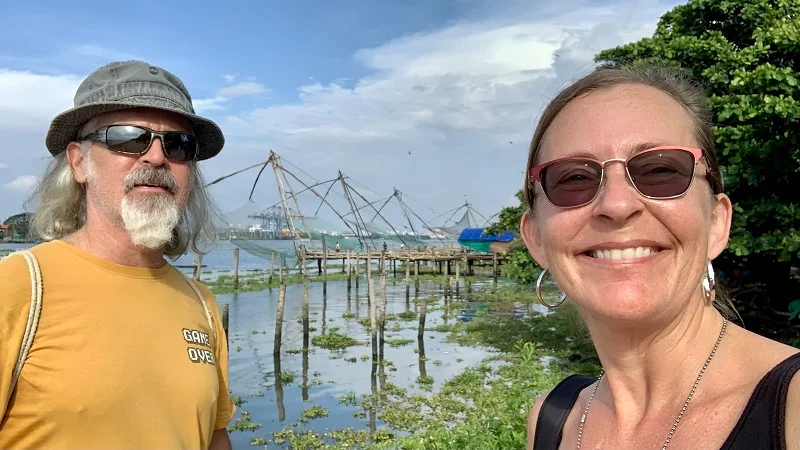
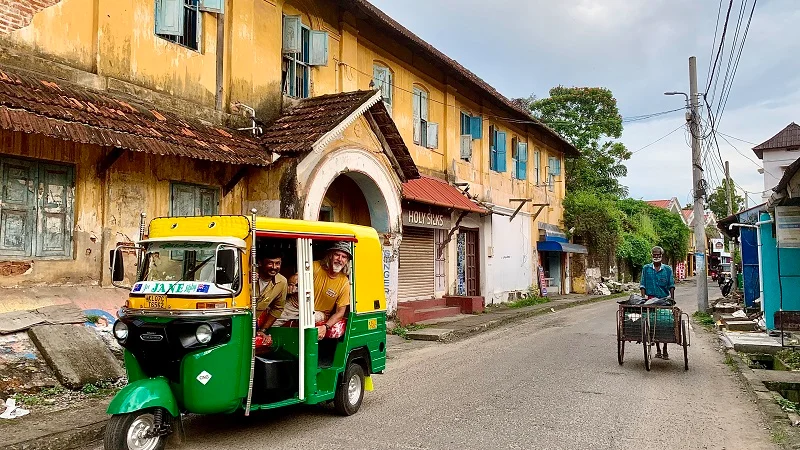
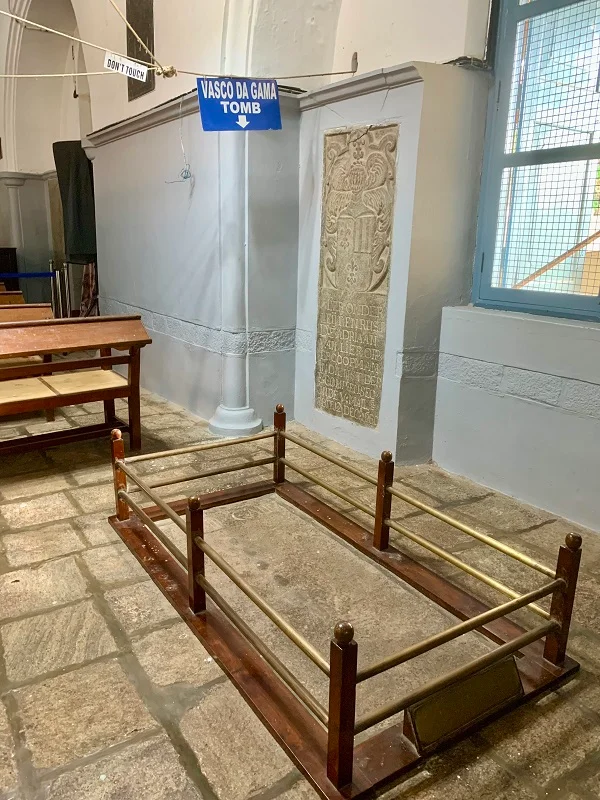
One stand out spot in Fort Kochi is the initial burial spot for Vasco da Gama, the Portuguese explorer who sailed around Africa to get to southern India.
Most tourists stay in Fort Kochi. I’m glad we are on the city side of the peninsula where there’s more ‘action’ and I can easily observe ‘authentic’ Indian life. It’s also closer to the metro, air-conditioned malls, more public buses, parks, etc.
Beaches across the peninsula from Fort Kochi are worth a walk. We enjoyed our stroll and snacks on Puthuvype Beach. It’s cleaner than beaches in Mumbai or Chennai, but trash is still a problem and it’s rough water for weak swimmers.
Side trip: Kerala backwaters
The better beaches are outside Kochi, along with the famous backwaters. Theo likens Kerala to Louisiana – hot and humid and filled with waterways. The backwaters are lagoons, canals, and a couple of small lakes used as ‘roadways’ to get from town to town, village to village.
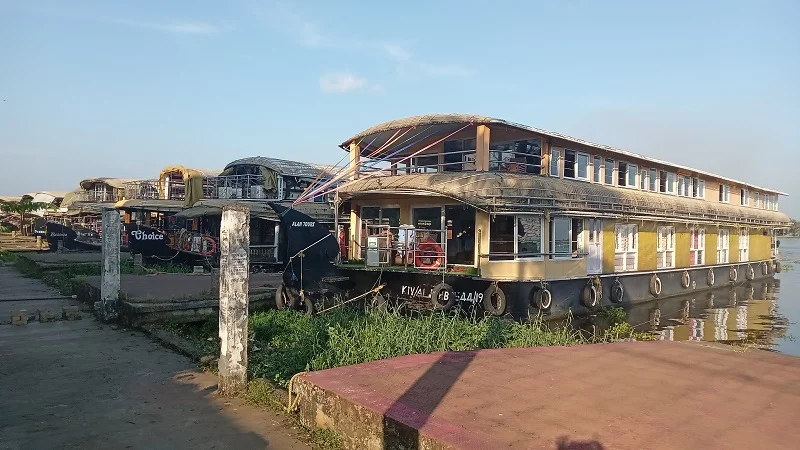
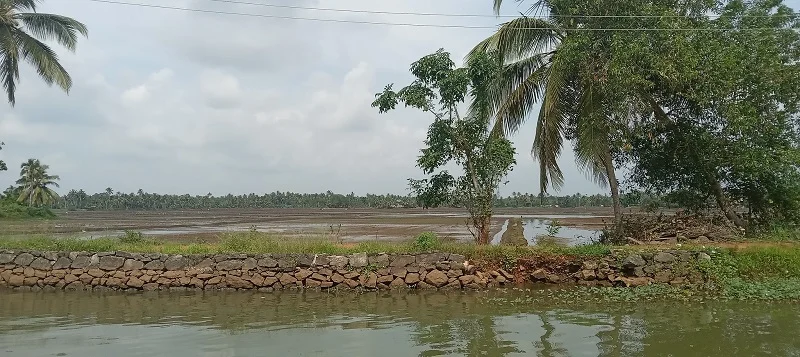
The backwaters area is known for ‘houseboat’ cruises. These are large boats equipped with AC and dining facilities, and some have beds for overnight tours. Tourists can visit villages along the wider backwater routes.
The area is also recognized as geographically unique because its rice fields are below sea level. The United Nations named the area as an agricultural heritage site. But with flooding and soil degradation, its climate fate is likely not good.
Ferry from Alleppey (Alapuzha) to Kotayam
Instead of a houseboat, we took the public ferry from Allapuzha (Alleppey) to Kottayam – and back. It cost — get this — 36 cents (!) for the 2.5-to-three-hour ride. This was an awesome way to spend the day. There wasn’t much to see in Kottayam – but the ride there is the main attraction.
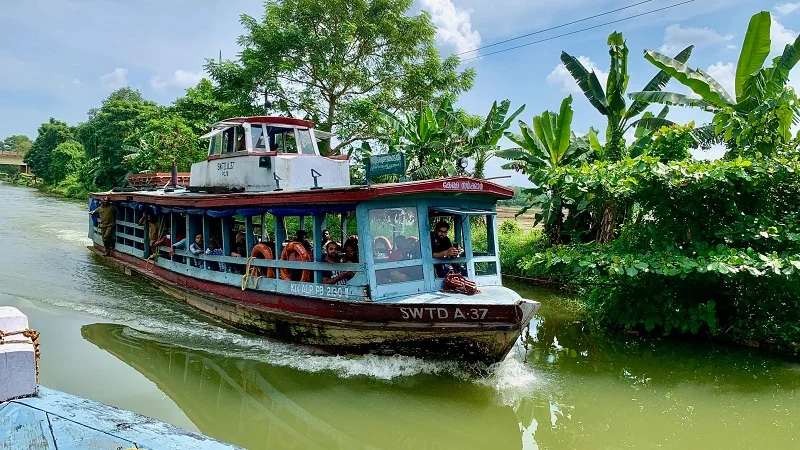
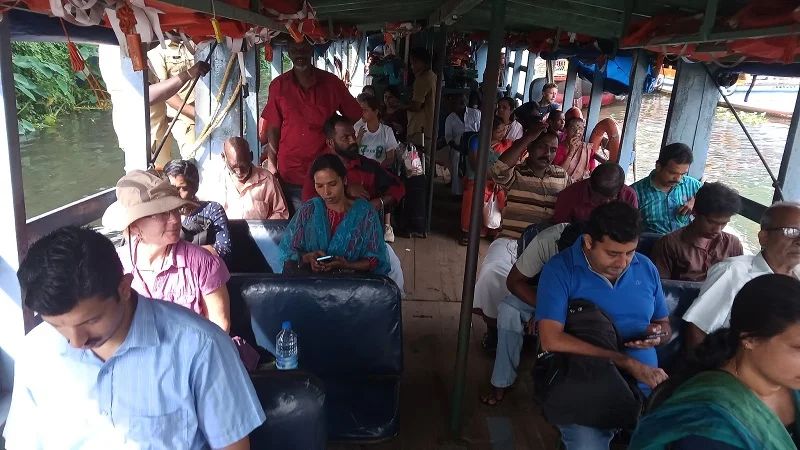
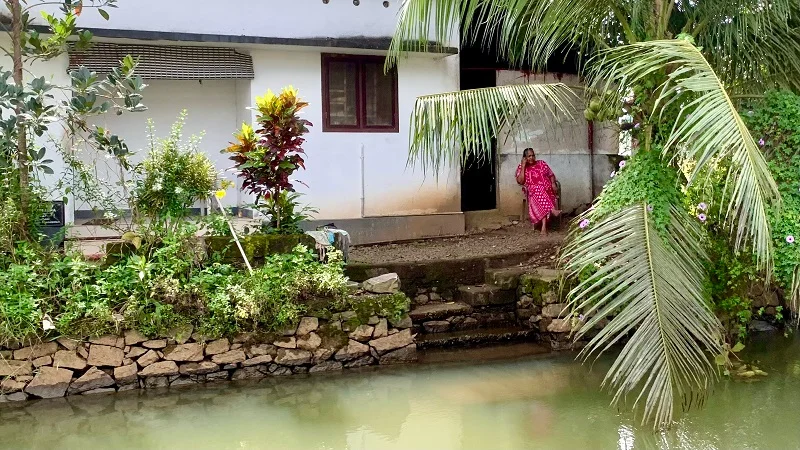
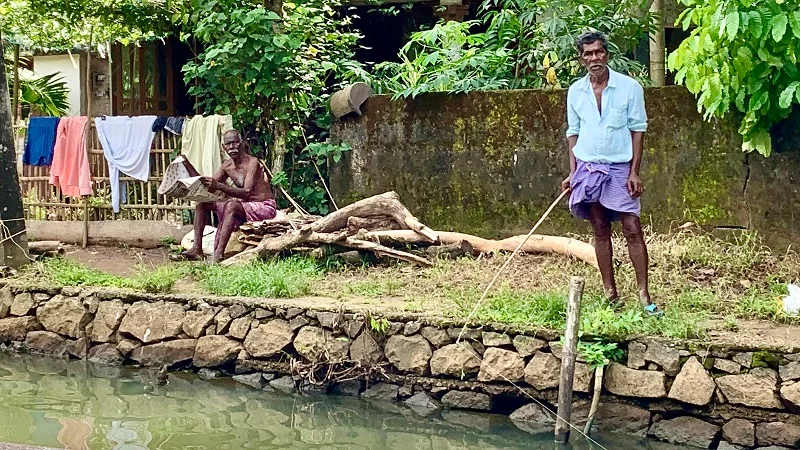
We stayed in a small room in a ‘homestay’ just a few steps from the Alleppey Beach. The beach is large, somewhat polluted and the water is rough, but great for sunsets and sea breezes.
Other things to do in Alleppey
Some other interesting things to note in the area:
- Coir Museum (coir is the fibrous coconut material used to make everything from rugs to rope to houses and decorations)
- Check out the beaches
- Ride a public bus
- Eat at a toddy (a place that serves fish thali and coconut ‘wine’ with high alcohol content (for Theo), and where you will probably have to eat with your hands)
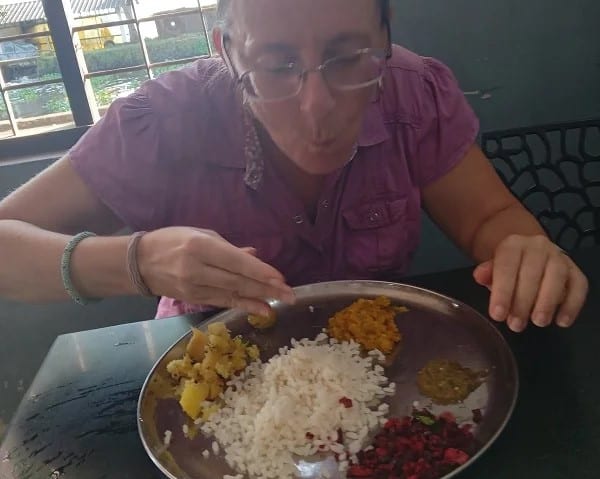
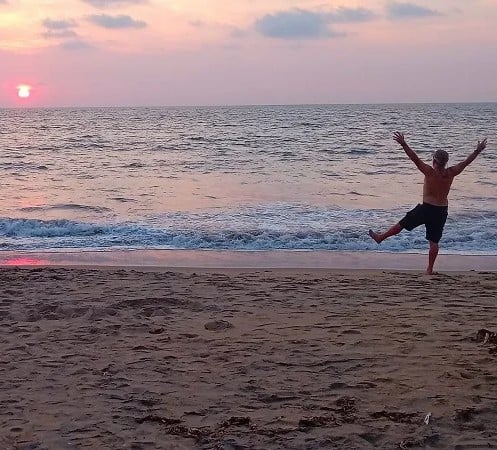
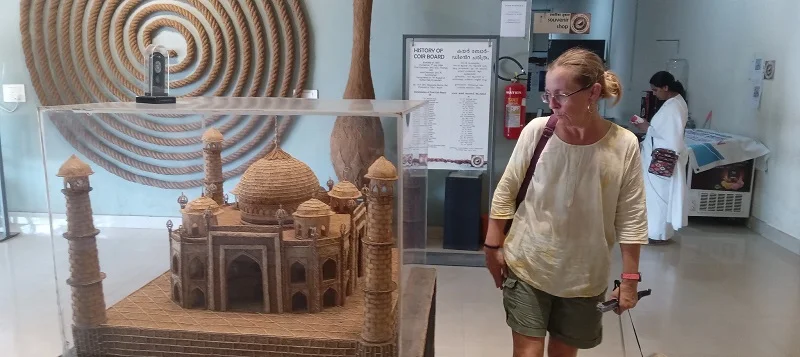
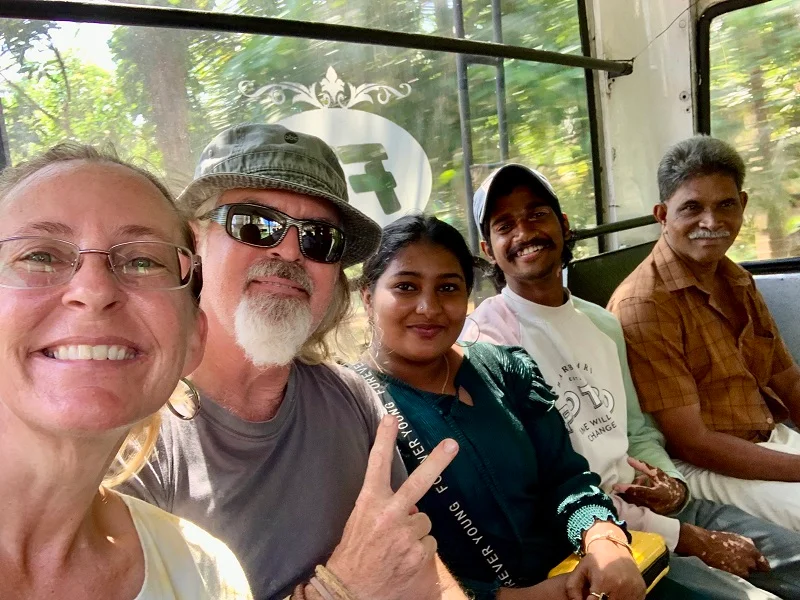
Politics & religion in Kerala
It’s worth pointing out that the communist party rules Kerala state — and it is the only place on Earth where the party has been freely elected in a democracy. Since India is the world’s most populated democracy, it’s not surprising the country lays claim to this title.
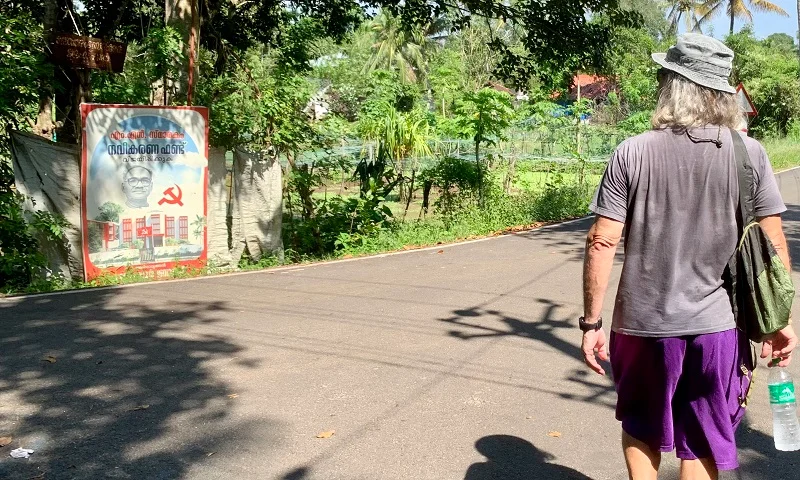
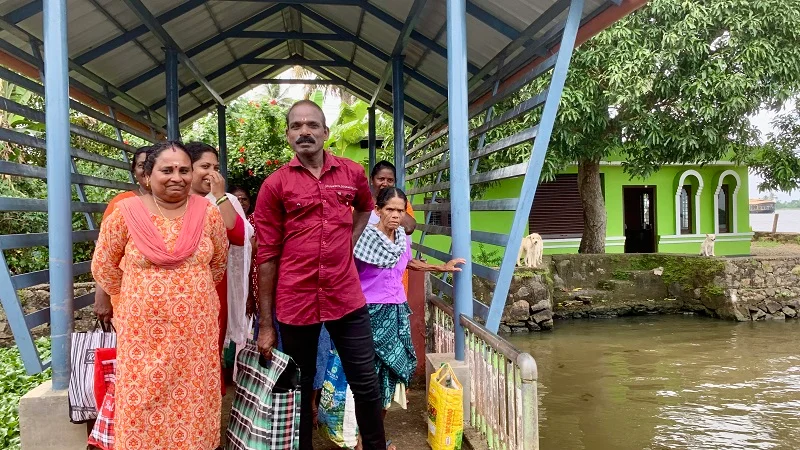
Also, there are more Catholics in Kerala than elsewhere in India. Hindus are still the majority at 49 percent, but Catholics are a close second with 42 percent — whereas Catholics make up only 1.5 percent of India’s total population.
No matter politics or religion, I’ve thoroughly enjoyed Kochi and Kerala and the people. In fact, just like elsewhere in India, the people I meet each day on buses, in stores, on Marine Drive, in canals and elsewhere, are surprised to see me.
I like that I’m a good unofficial ambassador to the USA. And I like to see my foreign friends smile.
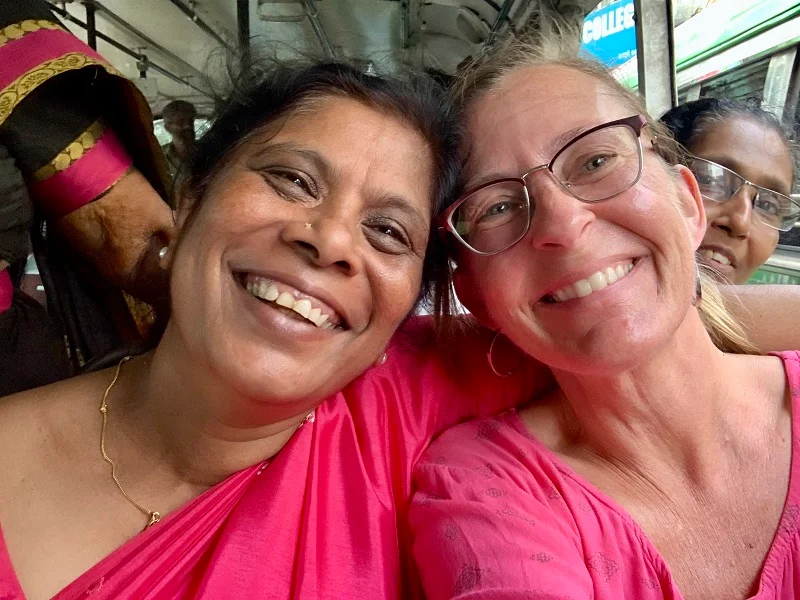
Travel now – Life is Now!

